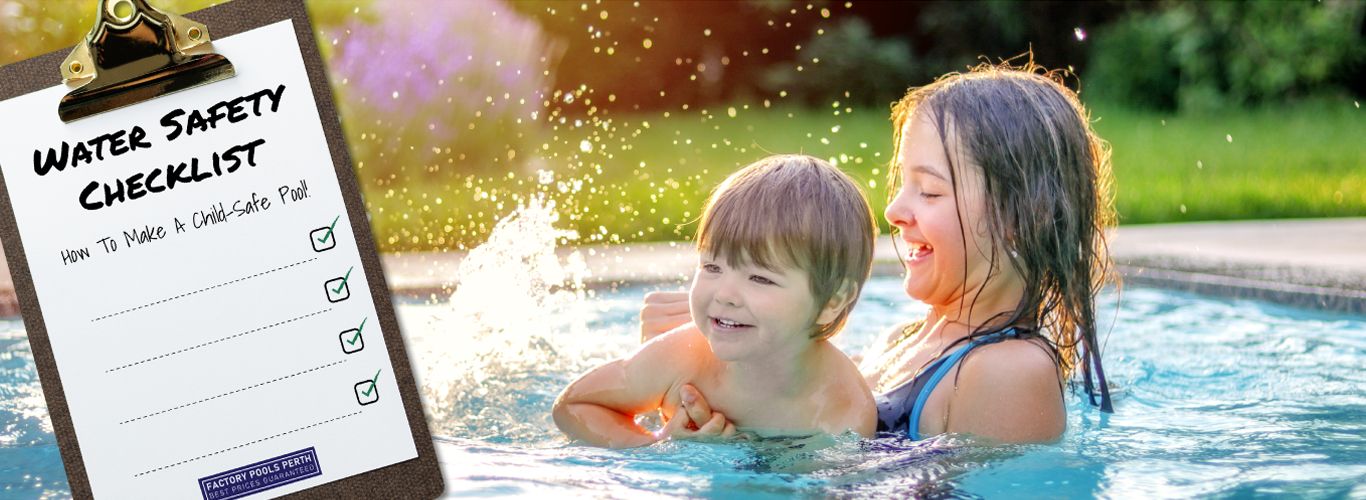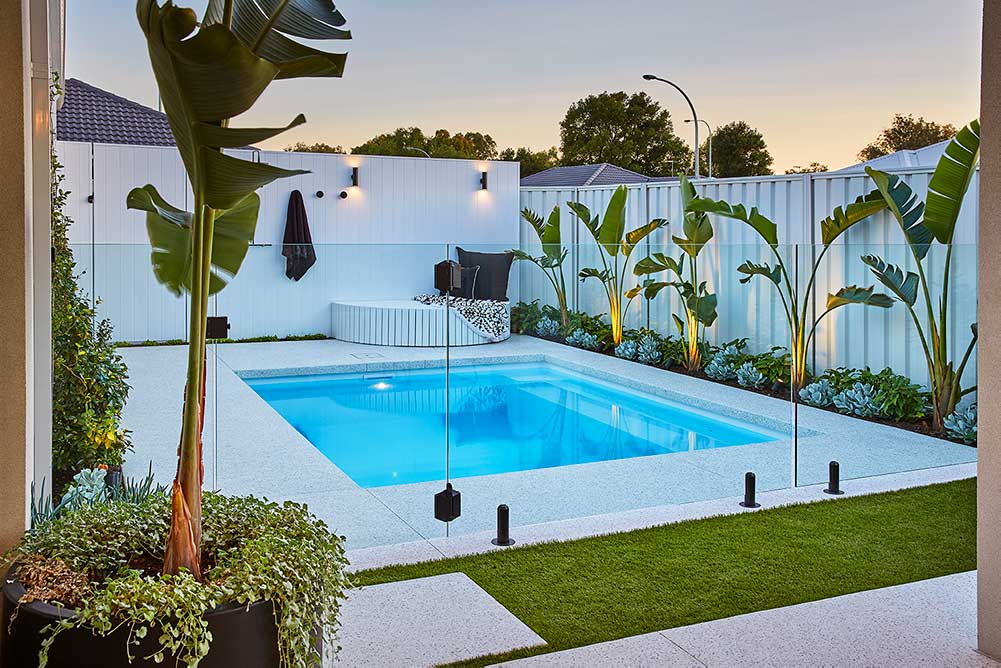Safety Checklist: How to Make Your Pool Child-Safe
At the heart of the matter, all fibreglass pools are designed to be fun for the whole family. It’s no surprise then that pools are a particular favourite of young children; who could blame them for wanting to splash in the sun all day! Although regular swimming has been shown to provide a seemingly endless amount of positive health benefits, pool owners should still exercise caution around young children. Safety should be a core tenant of fun for your family.
An unfortunate statistic is that unsecured pools, that do not follow council regulations, can be a source of injury or tragedy for young children that are not supervised. According to Australia’s Child Accident prevention foundation: “20 seconds and a few centimetres of water is all it takes for a child to drown.” An unfortunate fact is that the leading cause of child hospitalisation in Australia stems from swimming pool related accidents.
In order to keep our customers and their families safe from these types of accidents, the experts here at Factory Pools Perth strongly advise you to read this safety checklist. We’re going to run through the most effective ways to keep young children safe around your pool.

Ensure Your Pool Is Correctly Fenced
Proper fencing is required by council law to completely encircle your pool and poolside area. This is done so that even when you are away from home, your child or neighbourhood children cannot enter your pool. Without adult supervision, a young child is at a high risk of causing themselves harm in the pool. A correctly built fence will ensure this cannot happen.
According to the building code of WA, pool fencing must have a minimum height of 1200mm. If this fence gets damaged, it will need to be replaced or repaired immediately. Some of the most important regulations are:
- Double-check that your fence has no openings in it – as a result of wear and tear – that your child could use to bypass the fence.
- Keep your fence completely free of climbable objects – do not stack anything near or against your fence. Objects as benign as a bench, wheelbarrow, or pool equipment could be used by a child to climb over your fence.
- The vertical bars or spaces of the fence should not be wide enough for a child to pass through.
- The fence gate should have self-closing latches, and these latches should be beyond a child’s reach.
A Pool Cover Is Highly Recommended For Safety
Your fibreglass pool should always be covered when not in use. Consider using a strap with a lock to anchor the cover down. With a cover in place, should a child fall in then they will not be immediately be submerged in water. A pool cover can serve as a buoyancy device for young children to make their way back out of the pool.
Ensure Rules Are Followed For Safety’s Sake
Rules may not be the funnest thing to enforce, but they can drastically increase the safety of young children using your pool. It may be hard at first to bring these up but ultimately each rule is for the safety of your child. Consider creating rules for your pool’s usage such as:
- Do not run near the pool
- Do not enter the pool without adult supervision.
- Do not swim anywhere that is out of the line of vision of a nearby adult
A properly installed fence that adheres to local regulations is crucial in keeping your family members safe – especially young children while you’re away from home.

Store Chemicals In Secure Location
As you may be aware, cleaning chemicals are only meant to be used in your fibreglass pool. However, a child may not know this and could ingest cleaning chemicals if they are within reach. Cleaning chemicals can cause severe irritation of the skin and are not safe to ingest. Avoid this hazard by keeping your pool chemicals under lock and key in secure, undercover storage. Whenever you do take these chemicals out to clean your pool, ensure they are kept at a safe distance from any young children and nobody is swimming when you do clean with them.
Consider Installing An Underwater Pool Alarm
If you’re especially concerned about pool accidents happening, then one step you can take is installing an underwater pool alarm. This type of device will sound an alarm anytime that an impact is detected hitting your pool water; this is to simulate a child falling in the water. There are varying designs on the market, but all underwater alarms offer a great way to prevent serious injury.
A professional swimming teacher can provide your child with the knowledge and skills to swim safely. The best way to stay safe is to know how to swim in the first place!
Have Floats In The Pool
It is recommended that you have floated in the swimming pool. Although your child may know how to swim, you should have the floats in there for safety. If your child doesn’t know how to swim yet, a swimming instructor should help with swimming lessons. You can research what is important to you for the training, and these may include the quality of the swim teacher and preferring a swim teacher who could come into your home for home lessons.
Hire A Swim Teacher
There is no better way to keep your child safe in the pool than teaching them how to swim! By knowing how to swim, your children will be at far less risk of injury or drowning than if they didn’t. Teaching them to swim themselves is a method many parents use, but you may want to also hire the professional services of a swimming teacher.
Consistent Adult Supervision
There is no safety device or protective gadget that can substitute for complete adult supervision during swimming. It would be best to assign an adult to supervise when you have your child in the pool; this adult should be within arm’s length and not distracted.
Now that you have the checklist to ensure you have a child-safe pool, you can enjoy a more family fun time with less fear. If you don’t have one yet, then it’s time to get it. Factory Pools Perth manufacture Australia’s favourite fibreglass pools. Take a look at our extensive range today!

